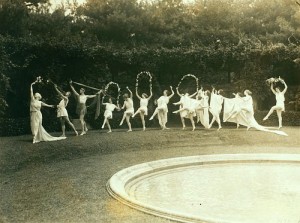 For me, learning is an exciting process where I absorb other people’s ideas and synthesize material to make my own connections and generate my own ideas. I love to learn. The excitement and joy of “getting it” makes me both figuratively and literally dance around a room. I appreciate this course because I got to do a lot of dancing.
For me, learning is an exciting process where I absorb other people’s ideas and synthesize material to make my own connections and generate my own ideas. I love to learn. The excitement and joy of “getting it” makes me both figuratively and literally dance around a room. I appreciate this course because I got to do a lot of dancing.
At the beginning of the course, I very much enjoyed reading the Postman article. The connection to Phaedrus and the arguments that Plato brought up against writing opened my eyes to the ongoing struggle to make sense of new technologies. First reading Postman and then the excerpt from Phaedrus itself made me realize the extent and the deep roots of the conversation about how to fit new technologies into the current world view and how society and culture is changed by the technologies themselves. I became very excited about the new ideas that I was learning about and I started establishing my own connections to the learning. I had conversations with everyone who would listen about the way that the arguments for and against writing have seemed to be recycled and reused and are now very much like the arguments for and against computers.
Reading Ong was an arduous process for me. I found the book difficult to comprehend and, like Alison mentioned in her post, https://www.vista.ubc.ca/webct/urw/lc5116011.tp0/cobaltMainFrame.dowebct
I had to go back and reread sections constantly in order to really understand what he was getting at. I think that the information in the book was very good but it was difficult to maintain a consistent enthusiasm for the new ideas when I had to work so hard for understanding. At the time, I felt frustrated that I had so much to read and it took me so long each week that I just didn’t have time to internalize the ideas in the same way that I had with Postman. The mental image I has at the time was less like dancing and more like dragging my feet through a knee deep swamp. I realized that I just had to keep reading it and, after a while, the ideas started to mesh and I began to really realize the worth of the book. In my mental image of learning, the swamp was behind me and I began to pick up my feet again.
One of the discussion questions in module 2 https://www.vista.ubc.ca/webct/urw/lc5116011.tp0/cobaltMainFrame.dowebct
caught my eye and really gave me a focus for my reading. My excitement about learning grew again as I became very interested in how rote learning works. I wrote my first commentary exploring what rote means and its place in both oral and literate societies. https://www.vista.ubc.ca/webct/urw/lc5116011.tp0/cobaltMainFrame.dowebct
Module 3 began the process of reading Bolter and I was hooked. I enjoyed reading his ideas and fully agree with his idea of remediation. By the time I got to module 4, my excitement was causing me to dance around the room at a dizzying pace. In the Prezi that I created for my final project, I embraced the idea of the remediation of image and print and explored the way that print can be subsumed inside of image. In the course of that project, I wrote a paper about how computers are remediating image and print and I used the prezi itself to illustrate the idea. Along the way, I learned how to use Camtasia studio to record the computer screen and edit my videos. I also learned how to embed video into Prezi. Although I didn’t write about it, I was aware of the multimodality of my work and the impacts of that multimodality on communication and understanding. Perhaps in another course, I’ll have an opportunity to explore those impacts in greater depth. But for now, all the dancing has made me tired and I am going to take a short rest. See you all after Christmas when we can dance together again.
my work and the impacts of that multimodality on communication and understanding. Perhaps in another course, I’ll have an opportunity to explore those impacts in greater depth. But for now, all the dancing has made me tired and I am going to take a short rest. See you all after Christmas when we can dance together again.
Heather
References
Ong, W. J. (2002). Orality and Literacy. London: Routledge.
Bolter J (2009) Writing Space. New York and London; Routledge
Postman, N. (1992). Technopoly: The Surrender of Culture to Technology. New York: Vintage Books, A Division of Random House, Inc.
Plato. Phaedrus. Retrieved from https://www.vista.ubc.ca/webct/ContentPageServerServlet/Imported_Resources/etec540demo_det_course_20070517151759/module02/m2-phaedrus.html?pageID=3758072946121


